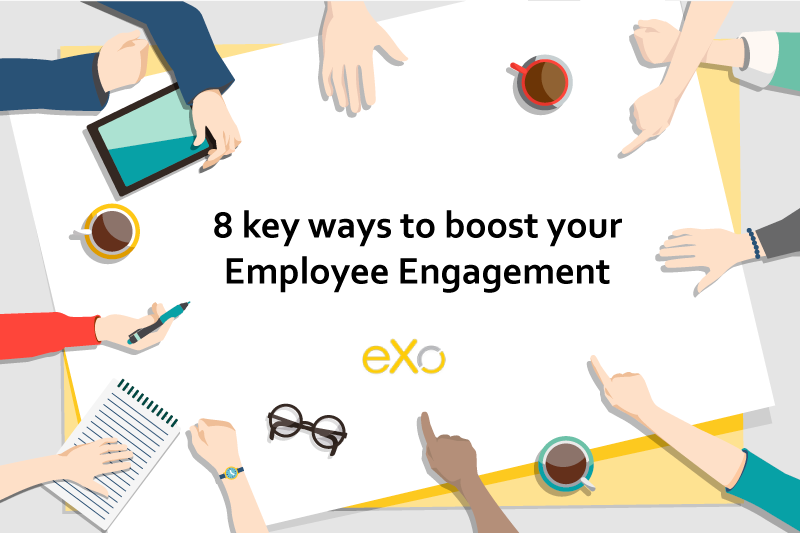- Fares Laroui
- March 10, 2020
What is Employee Recognition and how can it impact your business?

Content
In fact, a host of studies have been conducted to understand the impact of millennials in the workplace and what they look for in a new job.
55% of MILLENNIALS do not feel engaged at work.


FREE WHITE PAPER
Guide to
Employee Engagement
1. What is Employee Recognition?
2. The impact of recognition on employees
3. Types of recognition and the surge of recognition solutions
- The ability to recognize and praise peers’ work by sending kudos and thank you messages
- Setting contests and competitions to promote a culture of healthy competition
- Rewarding employees with badges and a variety of other pre-defined rewards, like tokens, gift cards (even making personalized Christmas cards), etc.
- Surveys to collect valuable feedback from employees
- Analytics to evaluate and examine recognition trends
- Leaderboards to rank employees based on contests or the rewards they have received.
4. How do employees want to get and give recognition?
- Public recognition or acknowledgment with awards, certifications or commendations
- Private recognition from management
- Receiving or obtaining a high level of achievement through evaluations or reviews
- Promotion and more responsibilities to convey trust
- Monetary awards to show appreciation, like bonuses, pay increases, trips, etc … or even something simple yet appreciated like vouchers for order of quick meals. These can serve as a token of gratitude and make the employees feel recognized for their contributions.
- personal satisfaction or pride in work.
FAQ
You will find here Frequently Asked Questions about employee engagement with all the answers in one place.
What is Employee Recognition?
In a nutshell, employee recognition is the act of acknowledging and rewarding employees or teams for their work, performance and effort.
Why is employee recognition so important?
Recognition has a psychological as well as a physiological impact on employees. First, a research study conducted by Deloitte tried to place recognition within the Maslow’s Hierarchy of Needs.
What are types of employee recognition?
The simplest form of recognition is verbal. This is where managers and employees praise peers verbally with a tap on the shoulder or a simple “well done”.
➝ Discover types of recognition and the surge of recognition solutions
How do employees prefer to receive recognition at work?
When asked what type of recognition worked best for them and was the most memorable, respondents ranked their experiences and the best recognition methods as follows:
- Public recognition or acknowledgment with awards, certifications or commendations
- Private recognition from management
- Receiving or obtaining a high level of achievement through evaluations or reviews
- Promotion and more responsibilities to convey trust
- Monetary awards to show appreciation, like bonuses, pay increases, trips, etc
- Personal satisfaction or pride in work.
It is also important to state that creating a transparent recognition company culture is the responsibility of managers.
Managers should provide their workforce with frequent and real-time recognition (ideally on a weekly basis) to guarantee that employees realize the importance of their achievements and stay motivated.
What is employee engagement?
How to Improve Employee Engagement in the Workplace?
- Ensure a strong corporate culture
- Ensure good relationship with management
- Foster good relationships between the colleagues
- Think about employee recognition
- Express meaning for work in your organization
- Make well-being and work/life balance your priority
- Allow more flexibility and autonomy
- Invest in skills development and training
➝ Find out how to improve employee engagement in the workplace
Related posts
- All
- eXo
- Digital workplace
- Open source
- Internal communication
- Collaboration
- News
- intranet
- Future of work
- workplace
- Knowledge management
- Employee engagement
- Employee experience
- Employee productivity
- onboarding
- Employee recognition
- Change management
- Cartoon
- Digital transformation
- Infographic
- Remote work
- Sneak Peek
- Solutions
- Thought leadership
- Tips & Tricks
- Tutorial
- Uncategorized
Leave a Reply
( Your e-mail address will not be published)


